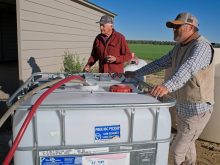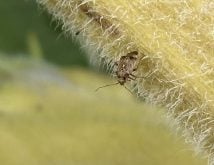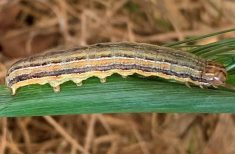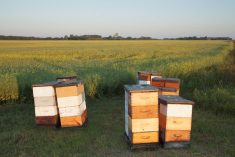Spring is finally coming to Alberta crop fields. Unfortunately, insect pests won’t be far behind. Weather, natural population cycles and wind conditions are just a few factors influencing insect pest numbers this season.
Grasshopper
Alberta is home to 85 species of grasshoppers, three of which caused economic damage to Alberta fields last year. In the Peace region, the dominant grasshopper species seems to be on a two-year population cycle, says Boyd Mori, assistant professor of agricultural entomology at the University of Alberta. Given the high population of that species in 2019, Mori says there is a good possibility Peace country producers will see fewer grasshoppers in 2020.
Read Also
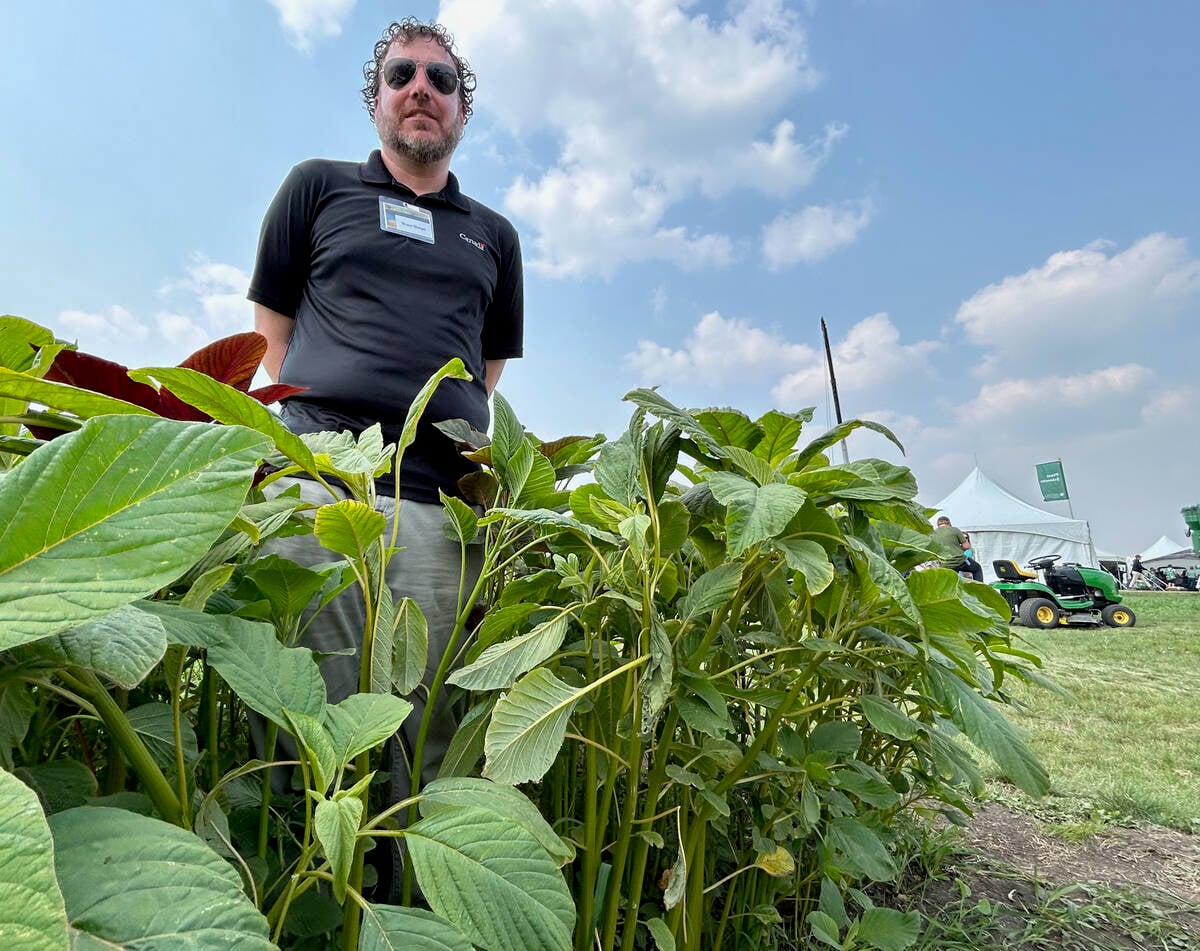
Glufosinate-resistant waterhemp appears in U.S. Midwest
News of glufosinate-resistant kochia in the U.S. is concerning as farmers are losing options to control waterhemp, also of the pigweed family.
Producers from Lethbridge to the U.S. border won’t be so lucky: the population of two-stripe grasshoppers — the south country’s more dominant species — depends on spring weather conditions rather than natural population cyclicality.
“If we have colder spring conditions, increased pathogens and a slower growth rate, these tend to keep two-stripe populations in check. But, if we have good, dry conditions early on, that really allows the population to increase,” says Mori.
Flea beetle and cutworm
Expect flea beetles and cutworms to be an issue in many Alberta fields again this year. Though scientists expect both pests annually, each appears sporadically and damage is difficult to predict.
“We don’t have very good forecasting tools for them, unfortunately,” says Mori. “Flea beetles are an example of a pest that can go from doing little damage to, basically, wiping out your crop in just a day or two. Farmers should definitely be out there scouting for them.”
Pea leaf weevil
Plant notch damage caused by pea leaf weevils was surveyed in 2019 in field peas but not in faba beans, though fabas are the weevils’ preferred host. Interestingly, surveys showed almost non-existent damage from south of Calgary to Red Deer, despite the fact their historic range spreads from the centre of the province right south to the border. However, both Lethbridge- and Edmonton-area farmers weren’t so lucky.
“The Edmonton area from Lacombe north all the way to the forest seems to be a hot zone for pea leaf weevil. Based on the feeding notches, there were pretty significant populations west to Sangudo and east to Vermillion. And, they were prevalent again around Lethbridge,” says Mori. “Producers who have already made their seed treatment plans have hopefully noted the weevil populations in their area and made appropriate decisions.”
Since 2017, pea leaf weevil has also been found into the Peace region, though in low numbers.
“Producers in the Peace may not be familiar with pea leaf weevil. But, since surveys keep finding them there, it’s clear they are established in that region, so producers should be on the lookout for them,” says Mori.
Cabbage seedpod weevil
Another weevil of concern — cabbage seedpod weevils — expanded their range significantly northward in 2017/2018. In 2019, they returned to their more historical spread, with populations between Calgary and Red Deer and high numbers between Lethbridge and the U.S. border.
Bertha army worm
Sporadic outbreaks of bertha army worm occurred in canola last year, particularly in the Smoky River portion of the Peace. Producers there can hope they’ve seen the worst, at least for a few years.
“Bertha army worm tend to have a six- to seven-year cycle. We’ve seen a few-year outbreak in the Peace region. We’re hoping natural enemies are now catching up so that perhaps now we’re starting a downward trend,” says Mori.
Bertha army worms largely skipped central Alberta in 2019, but a few fields just north of Lethbridge required insecticide. Nature may provide a partial solution for southern fields, says Mori.
“We did have some cold weather with little snow cover in December and January this past winter, which could hopefully help reduce populations for southern Alberta.”
Still, producers should be scouting and watching the live, in-season Alberta pest monitoring maps available online for bertha army worm. “If you’re in a region with noted higher numbers, you need to be scouting regularly because they can cause damage fairly quickly,” says Mori.
Diamondback moths and wheat midge
Diamondback moths are even harder to predict, since they require specific wind conditions to blow up from the United States. Last year, pheromone traps in Alberta caught very few diamondback moths.
An insect that should be slightly higher on certain producers’ radars — especially those southeast of Edmonton and southwest of Lloydminster — is wheat midge.
“We did have some moisture at potentially the appropriate time last year that could have allowed populations to start increasing,” says Mori. While higher populations weren’t reflected in the soil core surveys done in the fall, he recommends producers who have faced wheat midge issues in the past consider a midge-tolerant variety.
While insect pests are a frustration and cost to Alberta producers, Mori says the situation could be much worse.
“We actually have fewer insect pests compared to other regions of the world, and we spray significantly less insecticide. We have a winter that really helps set back insect populations and we have economic thresholds, which producers generally follow. Overall, producers are doing a good job, but they have to stay on top of scouting.”





